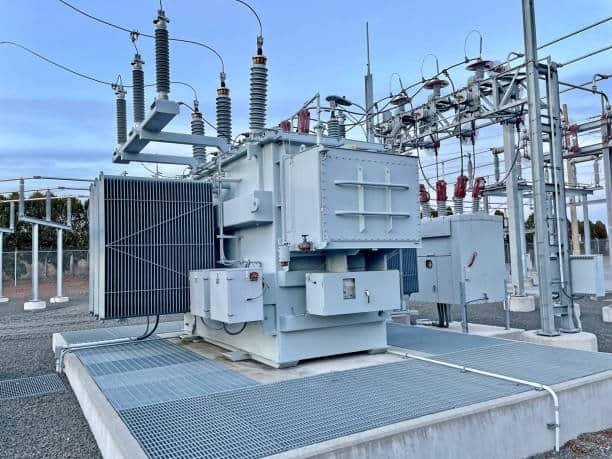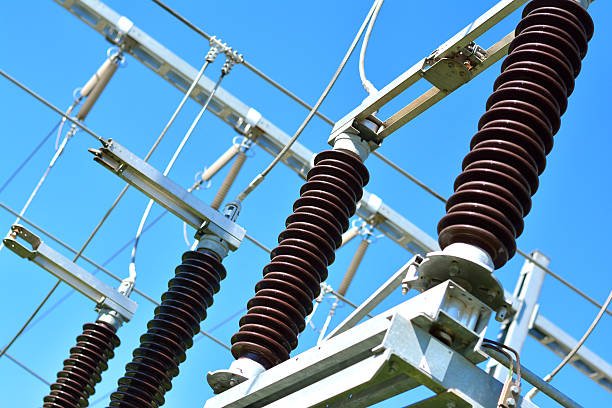Transformer is the indispensable equipment in the electrical system . Its normal running is vital to to ensure the stability of power transmission. However, the transformer will generate the heat due to the current passing through the conductor, resulting in a rise in temperature during the operating .
When the temperature of transformer accessories exceeds its allowable range for a long time, even the transformer oil temperature is 10℃ higher than normal or the temperature is still rising, the insulation of transformer will be easily damaged and broken down by high voltage,causing failure or accidents . In order to ensure the normal work and service life-span of transformer, it is very important to evaluate the transformer heat up. Let’s discuss the transformer testing for temperature rising in the article .

What caused the transformer temperature rising ?
The reasons for transformer temperature rise can be attributed to the following two aspects:
- Internal Reason
1) Core loss is a major source of heat inside the transformer. It is caused by hysteresis and eddy current effects in the iron core. In an operating transformer, a change in the magnetic field will cause the iron core to hysteresis, resulting in energy loss and conversion into heat In addition, the AC current in the transformer will also cause eddy currents in the iron core, which will also cause energy loss and temperature rise.
2) The coils in transformers are usually made of copper wire, and when current flows in the copper wire, it creates resistance, resulting in energy loss and heat generation. This loss is called copper wire loss and is another major source of heat inside the transformer.
3) The load power of the transformer also causes temperature rise. When the load power carried by the transformer increases, the current and losses in the coil also increase, resulting in an increase in temperature.
4) Tap changer poor contacts during the operating of transformer, The increased tap-changer contact resistance can be caused by wear and corrosion, loosening or deformation, dirt and dust, and improper maintenance. The contact is overheated and the temperature will be increased .
2 External Reason
1) Ambient temperature: The ambient temperature around the transformer will also affect its temperature rise. If the transformer is installed in a high-temperature environment, such as when the temperature is too high in summer or the transformer is sealed in a space without good ventilation, the high temperature of the surrounding environment will cause the temperature of the transformer to rise.
2)Poor cooling system: Transformers usually use cooling oil or cooling fans to dissipate heat. If the cooling system does not work properly or the heat dissipation is insufficient, the temperature of the transformer will rise.
In order to effective control the temperature rise of transformer, it is necessary to properly select the transformer with optimize the design and manufacturing process . Regular inspection and maintain the transformer is essential to ensure that it is working properly.
The transformer temperature rise test is vital to be adopted to measure the temperature rise of each component of electrical apparatus to adjust whether the test object meet the standard .
What is the transformer temperature rising testing ?
A Transformer temperature rise test, also called transformer Heat run test or a thermal performance test, is a crucial evaluation of how well transformers can withstand temperature variations under load.
The primary purpose of this test is to determine the temperature increase of various components within the transformer when operating at or near its rated load. A high temperature rise can damage transformer insulation, reduce efficiency, and reduce efficiency.
What is the importance of transformer temperature rise test?
The temperature rise test is an important type of test conducted on transformers to assess their ability to withstand and operate within specified temperature limits. Here are some key reasons why the temperature rise test is important:
Validation of Design and Performance:
The temperature rise test helps validate the design and performance of the transformer. By subjecting the transformer to its rated voltage and current for an extended period, the test ensures that the transformer can handle the expected load and operate within acceptable temperature limits .
Determination of Thermal Time Constant:
The time taken for the windings and oil in the transformer to reach a stable temperature during the test provides valuable information about the transformer’s thermal time constant. This parameter is crucial for understanding the transformer’s response to load changes and its ability to dissipate heat effectively .
Assessment of Cooling System Efficiency:
The temperature rise test allows for the evaluation of the cooling system’s efficiency in dissipating heat from the transformer. By monitoring the temperature rise and comparing it with design specifications, any issues with the cooling system can be identified and addressed .
Identification of Abnormalities or Defects:
During the temperature rise test, any abnormal temperature rise or deviations from expected values can indicate potential issues or defects in the transformer. This test helps in detecting problems such as poor connections, insulation degradation, or inadequate cooling, which can affect the transformer’s performance and lifespan .
Insulation System Evaluation:
The insulation system of a transformer is crucial for its reliability and longevity.
The temperature rise test provides insights into the performance of the insulation system under load, helping to detect any weaknesses or vulnerabilities.
Compliance with Standards:
The temperature rise test is often a mandatory requirement specified by industry standards and regulations. By conducting this test, manufacturers can ensure that their transformers meet the required temperature rise limits and comply with safety and performance standards
How to choose the suitable transformer testing equipment ?
Searching on Google will bring you a long list of transformer heat up test equipment. When choosing suitable transformer test equipment suppliers, there are several factors to consider to ensure accurate and reliable testing. Here are some key factors to keep in mind.

Test Method: Determine the specific test method required for your transformer heat up test. Common methods include the temperature rise test, short-circuit test, and load loss test. The equipment you choose should be capable of performing the desired test method.
Measurement Accuracy: Consider the accuracy requirements of your test. The equipment should have precise measurement capabilities to accurately measure temperature, current, voltage, and other parameters during the test .
Temperature Range: Ensure that the equipment can measure and handle the temperature range required for your transformer heat up test. Different transformers may have different temperature limits, so choose equipment that can accommodate the specific temperature range needed.
Power Capacity: Consider the power capacity of the equipment. It should be able to handle the power requirements of the transformer being tested. Ensure that the equipment can provide the necessary voltage and current levels for the test.
Safety Features: Look for equipment with built-in safety features to protect both the operator and the transformer being tested. This may include features such as overload protection, short-circuit protection, and insulation monitoring
Data test and Analysis: Consider whether the equipment has data logging capabilities to record and analyze test results. This can be helpful for documentation, analysis, and comparison of test data
Ease of Use: Choose equipment that is user-friendly and easy to operate. It should have clear instructions and intuitive controls to simplify the testing process
Calibration and Certification: Ensure that the equipment is calibrated and certified to meet relevant standards and regulations. Regular calibration and certification help maintain the accuracy and reliability of the test equipment
Cost: Consider the cost of the equipment and compare it with your budget. While it is important to choose reliable and accurate equipment, it is also necessary to find a balance between quality and cost.





